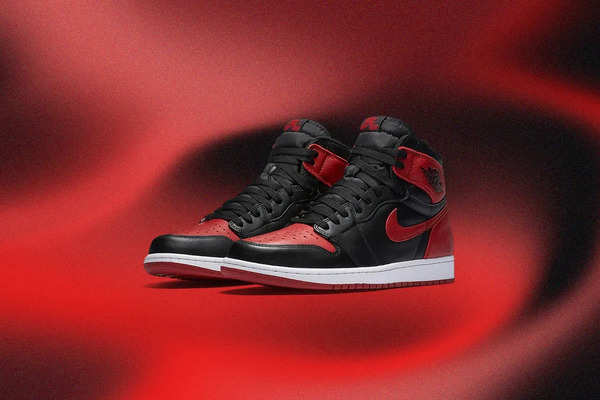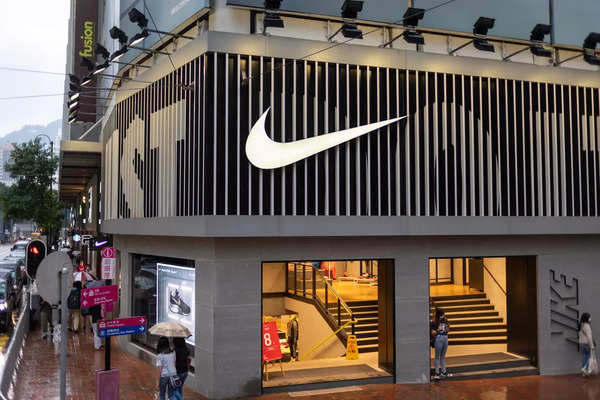In a move that would change the course of sneaker history, Nike agreed to pay a hefty $410,000 (approximately ₹33 crore) fine for the Air Jordan 1’s violation of the NBA’s uniform code. Rather than backing down, Nike turned this fine into a bold marketing opportunity, creating the iconic tagline: “NBA cannot stop you.” This clever strategy helped skyrocket the popularity of the Air Jordan 1 among fans.

In the 1970s, Adidas was the undisputed leader in the sneaker market, dominating both the streets and the courts with little competition. However, according to reports, a series of missteps allowed a then-small company, Nike, to rise up and eventually eclipse Adidas. Today, Nike’s market capitalization is three times the size of Adidas, a staggering transformation that began with a single, pivotal move.
During this time, Nike, originally known as Blue Ribbon Sports, was making a name for itself in track and field shoes. The company’s innovative “waffle pattern” sole gained popularity with athletes, helping Nike establish its presence in the sports shoe market. However, basketball was still the domain of Adidas and Converse, the two major players in the game.
Nike’s sales were on the rise throughout the 1970s, growing from $28.7 million (roughly ₹230 crore) in 1973 to a remarkable $867 million (around ₹70 billion) by the end of 1983. However, the company hit a setback in 1984 when it posted its first-ever quarterly loss.
Adidas’s complacency and Nike’s opportunity
The turning point came in 1984, during the NBA draft. A young, up-and-coming player named Michael Jordan was selected by the Chicago Bulls as the third overall pick. Jordan had played for North Carolina, where he won the ACC Rookie of the Year title in 1982. He had worn Converse shoes during his college years due to a sponsorship deal with his coach, Dean Smith. However, Jordan had a strong preference for Adidas and had hoped to wear their shoes in the NBA. But despite recognizing Jordan’s potential, Adidas failed to make an offer to him, which led to Jordan’s growing frustration.

When Jordan met with Converse, the company’s president, John O’Neil, proclaimed, “We are basketball,” highlighting the brand’s deep connection to the sport. Jordan, unimpressed, responded by asking, “Where is my place in this discussion?” After a long silence, Converse offered Jordan a deal worth $100,000 annually—standard for major athletes at the time—but it was clear that they lacked fresh, innovative ideas.
Nike Seized the moment
When things didn’t work out with Converse, Nike saw an opportunity. They needed a superstar, and they believed Michael Jordan was the one to elevate their brand. Initially, Jordan was not interested in Nike, as he preferred Adidas. However, Nike executives worked hard to get Jordan’s attention, leveraging his agent, David Falk, and Jordan’s father to arrange a meeting.
In the meeting, Nike presented Jordan with a custom design for a red and black shoe. Jordan, who liked Adidas for its “ground-feel” design, was impressed by Nike’s willingness to customize shoes to his exact specifications—something no other company was offering at the time. This unique offer sparked Jordan’s interest.
Nike offered Jordan a five-year contract worth $500,000 per year (around ₹4 crore annually), including stock options and other perks. The total value of the deal, with bonuses, reached $7 million (approximately ₹56 crore). This was a groundbreaking deal in the sneaker industry, as the largest contract at the time was a $150,000 per year deal with New Balance for NBA star James Worthy.

Despite this extraordinary offer, Jordan remained loyal to Adidas and approached the brand once again, asking them to match Nike’s deal. Adidas, however, dismissed him as “too small” for such a major contract. As a result, Jordan signed with Nike.
The Air Jordan phenomenon
Nike worked closely with Jordan to design a shoe that met his needs, and the result was the Air Jordan 1, released during the 1984-85 NBA season. The shoe, featuring bold red and black colors, was a direct violation of the NBA’s uniform code, which mandated that shoes must match a team’s colors. Nike faced a $5,000 fine for every game Jordan wore the shoes. In total, the fine amounted to $410,000 (around ₹33 crore).
Instead of backing down, Nike cleverly turned this penalty into a marketing opportunity, using the slogan “NBA cannot stop you from wearing these shoes.” The bold campaign struck a chord with consumers and helped make the Air Jordan 1 an instant hit.
In his rookie year, Jordan exceeded all expectations. He averaged 28.2 points per game, was named an NBA All-Star, and earned the title of Rookie of the Year. By the end of 1985, the Air Jordan brand had generated over $100 million (approximately ₹800 crore) in revenue.
Prince Narula on staying away from Television, career in singing and his struggle
Nike’s dominance
By 2019, Nike commanded an 86% share of the basketball market and a staggering 96% share of the lifestyle-basketball market. During the 2019-20 NBA season, an impressive 77% of NBA players wore Nike or Air Jordan shoes. That year, Nike’s revenue soared to $40 billion (roughly ₹3.2 lakh crore), surpassing Adidas’s revenue by 60%.
Today, Nike is worth $112 billion (about ₹9 lakh crore), three times the market value of Adidas, which stands at $40 billion (approximately ₹3.2 lakh crore). The brand’s association with Michael Jordan, thanks to the Air Jordan franchise, remains one of the most successful marketing strategies in sports history, and it’s clear that Nike’s investment in Jordan was a game-changer for the company and the sneaker industry at large.







